Some people hate feet.
Some people like feet.
Some people REALLY love feet.
And (for the most part) we all have feet.
That’s really cool, cause they’re REALLY important.
Whats So Great About Feet?
In the way-way back time, before shoes, feet are how we interacted with the world around us.
Feet were the INSTANT feedback mechanism.
Changes in terrain, slope, pitch, textures etc. ALL that information was taken in via the feet.
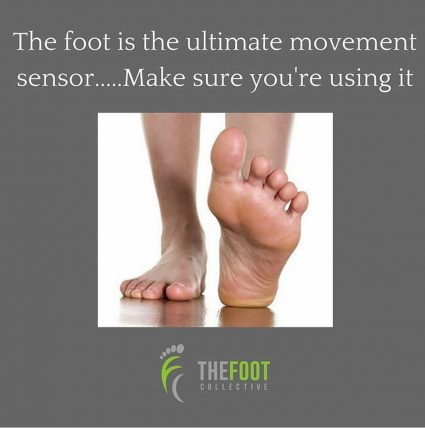
But alas, we f-cked up.
As we became desk bound and lazy we looked for comfort over function and stuck these pillows on our feet and subsequently F-ed one of our PRIMARY sensory input mechanisms.
Thanks Nike
Athletic Shoes….
That’s a misnomer.
They should be called unalthletic shoes.
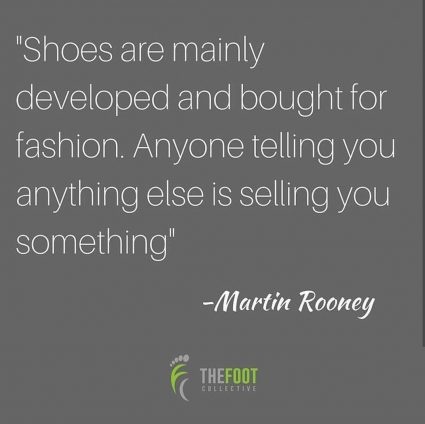
“You Need More Support”
“Motion Control”
“Ankle Support”
“Pronation Control”
Wait, we need to restrict motion at one of the most mobile joints in the body?
Wouldn’t, like, millions of years of evolution have figured this one out and stiffened that joint up?
Ok, I’ll bite…
SOME people are indeed, hypermobile, and could benefit from some joint/ motion restriction.
But these shoes were/ are MASS MARKETED.
And by mass marketed, I mean, SOLD TO EVERYONE who buys “athletic shoes”. <—-walk into Foot Locker and call me a liar
How can EVERYONE have a hypermotion issue?
They Can’t
But what they can have is:
- Poor hip strength
- Poor foot strength
- Poor ankle strength
- Poor ankle mobility
- Poor foot mobility
- Poor hip mobility
So they need something that is comfortable to walk, stand, live in because well, walking , standing, living has become uncomfortable.
Wait, the MOST common form of human movement is now UNCOMFORTABLE.
Yeah, cause if it wasn’t you wouldn’t want/ need to wear pillows on your feet just to take a walk.
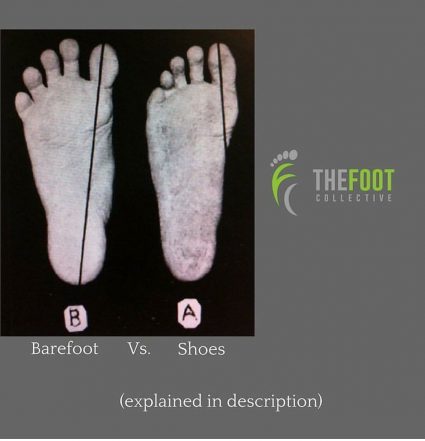
So What’s the Problem(s) with the Pillows Anyway:
#1: You’ll actually change your gate from the natural fore foot/midfoot strike to a heel strike. <—-where the pillow is thickest
#2: If you have (once you develop) poor movement/ motor control the pillows will mask it.
There will be VERY limited feedback (pain and discomfort, remember kids, we’re in big fluffy, comfortable pillows) until you REALLY jack something up.
What do Jacked up Feet Look Like?
If your foot looks “cramped up” like this:
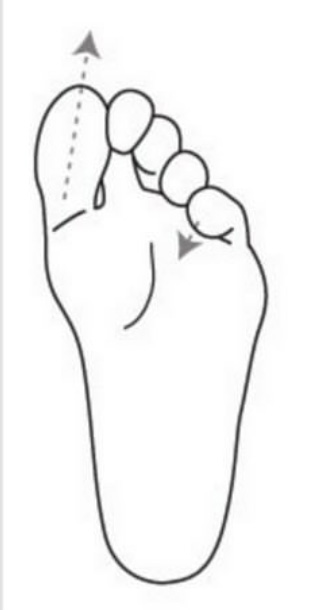
- Toes crushed/ cramped together
- Toes rounded under the foot
- Flat arch
- Foot is cantered to the midline/ ie shin and heel bone are not lined up
That’s NOT a good thing.
If your foot looks like this:
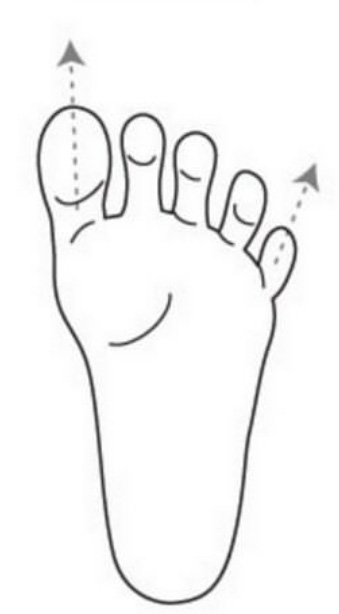
- Toes separated
- Out, fully extended in front of the foot
- Visible arch at rest
- Shin/ Heel bone is lined up
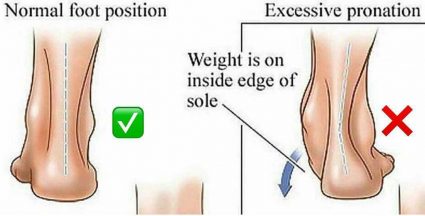
That’s a good thing, you can probably stop reading now.
What to Do, What to Do:
In no particular order (that means DO THEM ALL, not in exercises, but in categories).
Ankle Mobilty:
Ankle Alphabet:
Ankle Mobility (Dorsiflexion):
BTW, Ankle Dorsiflexion, think knee over toes (with the heel planted and foot stable) is VERY important.
Long story short, if ya can’t dorsiflex, you’re more likely to blow out your ACL.
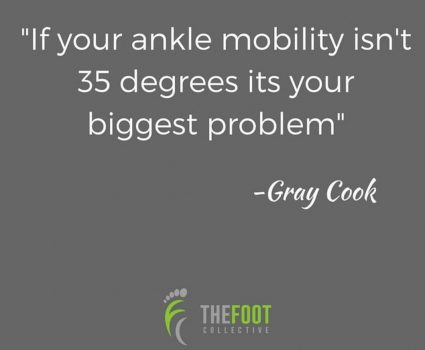
Toe/ Foot Mobility:
Toe Spreads:
Sand Walking/ Running:
The hyper-liable surface forces your foot and ankle to splay and move and conform to the surface.
This is great for developing mobility in the joints.
* Note: Sprinting in sand is possibly one of the DUMBEST things “performance coaches” have athletes do in an effort to get faster.
They only do it because it’s really hard, fatigues the sh@t out of your legs and makes you breathe heavy.
Here’s the thing, for sprinting speed, you rely on the SSC (stretch shortening cycle), ie the plyometric effect of the tendons.
The more of a plyometric effect the faster you can sprint.
The effectiveness of plyometrics is a minimized amortization phase (ground contact time) <—-see where this is going?
Sprinting in a medium that prolongs the contact time blunts the effectiveness of the SSC.
ie, Constantly sprinting in sand will increase your ground contact time, decrease the rate of force development and can make you slower.
But walking or jogging in sand to increase foot mobility is a good thing.
Hip Mobility:
External Rotation:
Internal Rotation:
Ankle Strength:
Toe Walks:
Heel Walks:
Foot Strength:
Janda “Short Foot”:
Towel Crunch:
Toe Pickups:
Hip Strength/ Control:
The hips (glutes) control the Femur (upper leg bone).
If the glutes are not working you will internally rotate/ COLLAPSE the femur and that will go downstream..
Read: Your knee will move into the midline and screw everything up.
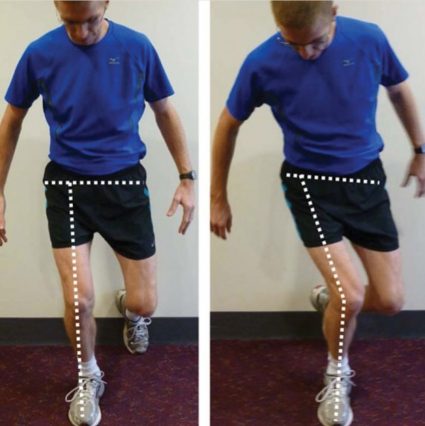
Do THESE IN BARE FEET if possible…
Really focus on creating a “Tripod Foot”, creating a hard arch and gripping the ground.
Standing Clamshell:
Single Leg Deadlift:
get you some learning bout these here
A little core would be good too.
Especially things like weighted carries.
If the pelvis can’t stay stable, it doesn’t matter if the ankle, foot and hip have mobility there’s a good chance you’ll still collapse.
You Probably DO NOT Need Pillows “Controlling” the Motion Of Your Feet.
At least not forever.
You need the lower limb, from toes, through the foot, ankle, knee and pelvis to be adequately mobile, strong and controlled.
If you are all “jacked up” at the feet and ankle it’ll take some real work and diligence to fix this stuff.
It aint gonna be easy, and it aint gonna be quick.
But it can improve.
The #1/ Easiest Thing You Can Do:
Get the Shoes off and Walk Around Barefoot More.
Let the system perform in the environment it should.
When you do that, things tend to have a funny way of figuring things out.
This doesn’t mean you need to start running and training barefoot.
DO NOT JUST LOSE THE SHOES.
But begin to regain the mobility and strength in the foot and ankle, while transitioning into a more barefoot/ minimalist shoe training environment.
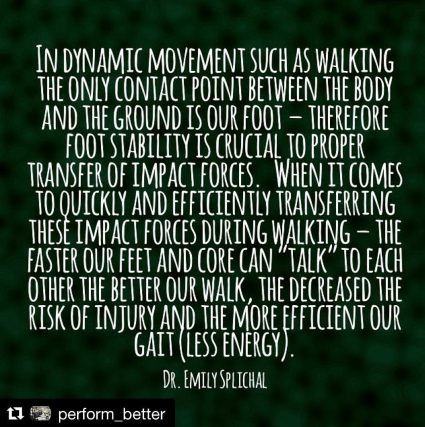
All the images in this article were used with permission from The Foot Collective.
You should go follow them on Instagram, like right now. They post really good stuff everyday.
So BIG THANKS to them.



[…] The foot will collapse and the knee will follow it moving into a valgus position. […]